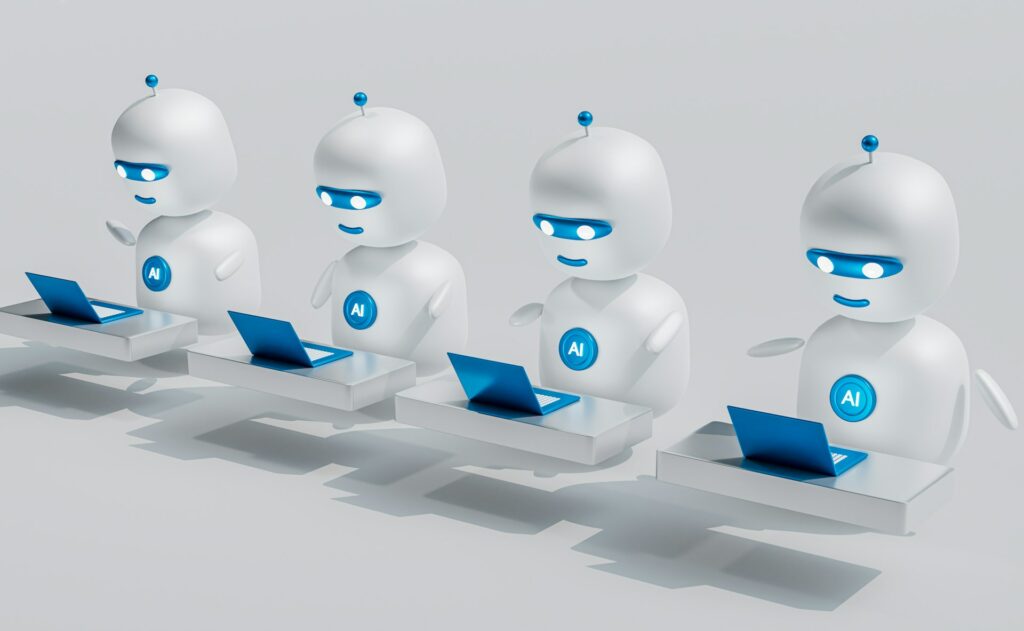The Role of Artificial Intelligence in the Diagnosis of Rare Diseases:

The Role of Artificial Intelligence in the Diagnosis of Rare Diseases:
When a Diagnosis Takes Years This is an Introduction
For a great number of individuals who are suffering from uncommon illnesses, the process of obtaining a diagnosis might seem like an endless labyrinth. They often go to a number of different physicians, go through a great number of tests, and spend years in doubt, all without receiving definitive answers. There is a straightforward explanation for this: rare illnesses are, by definition, infrequent. In the course of their careers, many medical professionals may never encounter certain illnesses. The purpose of artificial intelligence (AI) is not to take the role of medical professionals but rather to provide them with data-driven insights that have the potential to transform people’s lives.
Artificial intelligence is rapidly becoming a valuable ally in the healthcare industry. Additionally, when it comes to uncommon illnesses, which often go untreated or are misdiagnosed, artificial intelligence has the ability to shed light where there has only been uncertainty throughout the past.
Exactly Why It Is So Difficult to Diagnose Rare Diseases
There are around seven thousand uncommon illnesses that are known to exist in the globe. A few dozen persons are affected by some, whereas others only impact a few thousand people. The symptoms of these disorders are so unusual that they are often confused with those of more prevalent conditions. It is because of this that therapy is delayed, mental discomfort is experienced, and the health effects get worse.
In the majority of instances, it makes perfect sense for doctors to be taught to seek for what is most likely to be the case. When it comes to uncommon illnesses, however, the “most likely” diagnosis is often incorrect. Patients could be subjected to a number of inappropriate therapies before someone finally understands what is really going on.
The Impact of Artificial Intelligence on the Game
Artificial intelligence is capable of processing enormous amounts of medical data, which is far more than any human being could possibly do. It is possible for artificial intelligence to search for patterns that indicate the presence of uncommon illnesses by examining patient histories, symptoms, genetic information, laboratory findings, and even pictures such as MRIs or scans.
Artificial intelligence has access to millions of instances, in contrast to a single doctor working alone. It is not going to forget. This does not get worn out. Also, it has the ability to indicate the likelihood of a rare disease even when it is the response that is the least clear. This has the potential to significantly reduce the amount of time required to arrive at an accurate diagnosis.
The capacity of artificial intelligence to compare the data of a patient with worldwide illness databases has been one of the most significant advances. An instantaneous link may be made by artificial intelligence in the event that a youngster in Pakistan has symptoms that are consistent with a rare illness that is only seen in Japan.
Examples of Real-World Situations That Make a Difference
Over the last several years, artificial intelligence has been important in identifying uncommon genetic diseases in children that had previously been going undetected for years. In many instances, it was able to recognize discrete facial characteristics or genetic markers from medical photographs that human physicians were unable to recognize.
face recognition artificial intelligence, for instance, has been used to identify disorders based on minute changes in face shape. This is something that the majority of physicians would not notice unless they had extensive knowledge with the specific ailment in question.
There is also a success story in the field of uncommon malignancies. By studying pathology slides and genetic data, artificial intelligence systems have assisted in the identification of uncommon tumor kinds, which has enabled patients to have access to targeted therapy sooner.
The quicker the diagnosis, the quicker the treatment.
When it comes to uncommon illnesses, time is of the essence. When an illness is not detected for a longer period of time, it becomes more difficult to treat. Certain very uncommon conditions are progressive, which means that they worsen with time. An early diagnosis may be the difference between a therapy that can change the course of one’s life and harm that cannot be reversed.
It is not only possible for artificial intelligence to assist in diagnosis; it can also provide recommendations for treatment choices, forecast the course of illness, and even connect patients to clinical trials for novel treatments. It’s not only a convenience for folks who are living with uncommon illnesses; this is a need. It is a means of survival.
Obstacles to Take Into Account
AI in the detection of uncommon diseases is not yet ideal, despite the promise it holds. There is a worry over data privacy, particularly in relation to more sensitive genetic information. It is also necessary to make certain that artificial intelligence models are trained on a wide variety of datasets. This will guarantee that the models are applicable to individuals of all demographics and areas, not simply those from Western nations.
In addition, artificial intelligence technologies should be utilized in conjunction with medical professionals rather than in place of them. The process of diagnosis includes more than just matching facts; it also requires listening, empathy, and a comprehension of the whole backdrop of a patient’s living circumstance. When human care and mechanical accuracy are complementary to one another, the greatest results are achieved.
A Perspective on the Future: A More Promising Prospect for Rare Patients
With the increasing precision and accessibility of AI technologies, there is a tremendous possibility that they may revolutionize the way in which we provide medical treatment to patients who suffer from uncommon illnesses. Patients will no longer be required to suffer in silence or endure years of being misdiagnosed throughout their treatment.
It is possible that in the future, artificial intelligence may be included into regular checkups, where it would silently analyze symptoms and offer alternatives that even experienced medical professionals might not explore. As a result of advancements in genetic testing, telemedicine, and global health databases, we are approaching a new age in which uncommon illnesses are no longer synonymous with invisible diseases.
Remarks to Conclude
Individually, rare illnesses may only affect a small number of individuals, but together, they have an effect on the lives of millions of people all over the globe. AI is not only assisting in the speedier diagnosis of cases, but it is also providing hope in situations where there was previously just frustration.
We are closer than ever before to finding a solution to one of the most difficult problems facing the healthcare industry by combining the compassion of humans with the strength of intelligent technologies.
Moreover, that optimism is important for each and every patient who is still waiting for a diagnosis.




